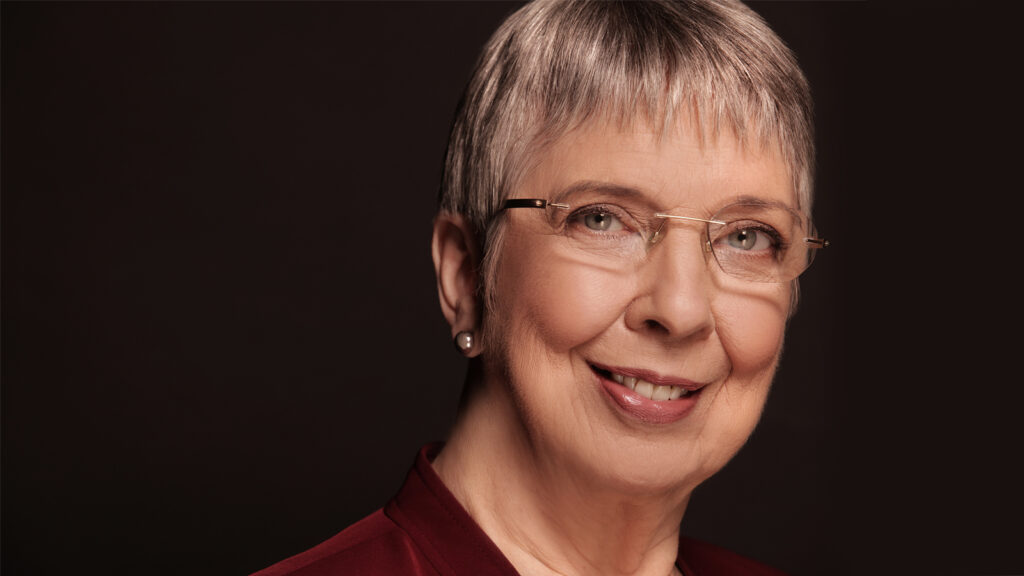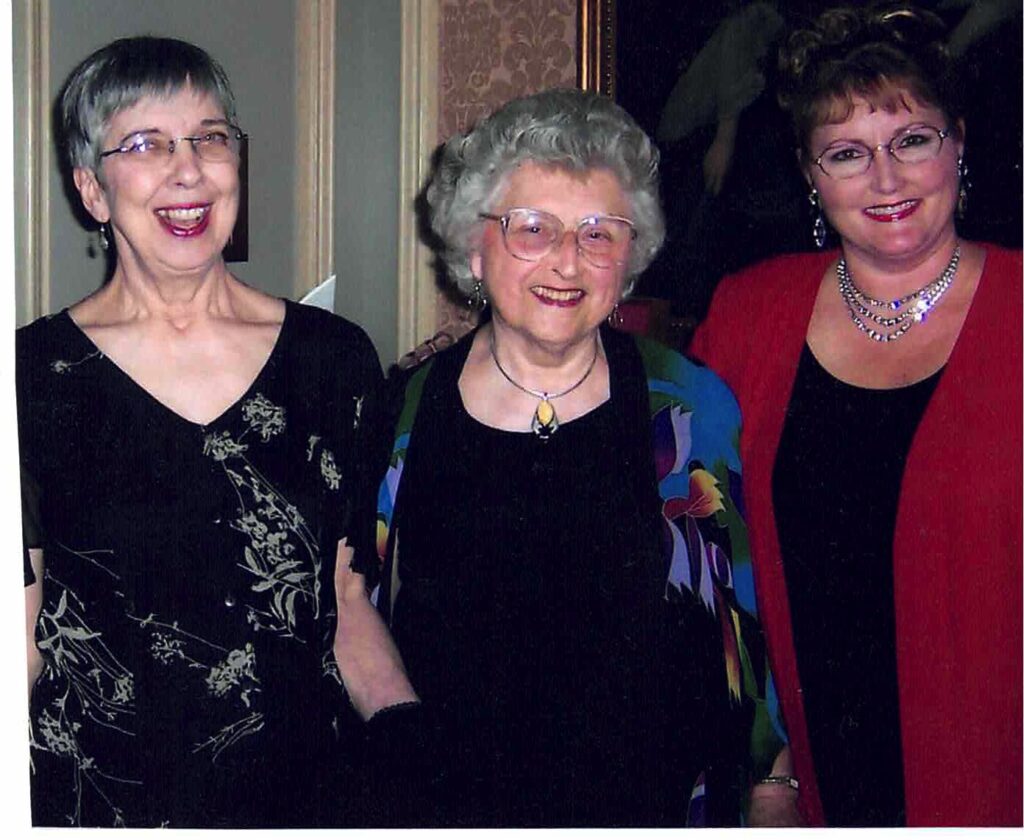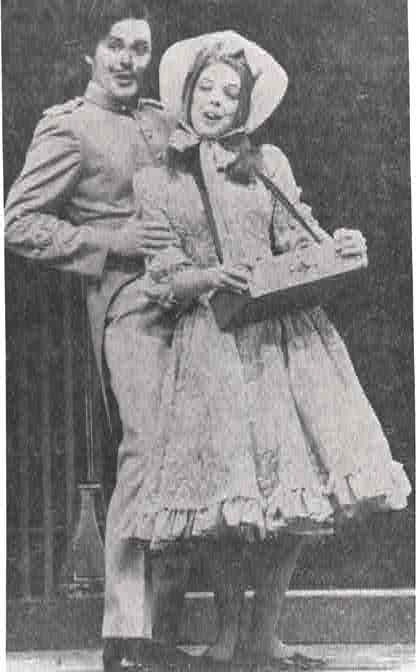

Member since 2009
Martha Randall
"The voice has much in common as a vocal instrument from unique student to unique student, thus the basics in any given genre are breath, phonation, and resonance, to be addressed separately and in combination. "
Member since 2009
Martha Randall
“The voice has much in common as a vocal instrument from unique student to unique student, thus the basics in any given genre are breath, phonation, and resonance, to be addressed separately and in combination. “
Martha Randall (soprano) retired in 2020 after teaching voice and voice pedagogy at the University of Maryland School of Music for 28 years. She received her B.M. and M.M. degrees from the University of Kansas, continued study in Munich on a Fulbright Scholarship, and was a student of Todd Duncan for many years. She continues to have a small private studio and works with both amateur and professional singers. She has appeared at the Kennedy Center (including its opening with the Bernstein Mass in 1971), Constitution Hall, the Phillips Gallery, and performed with the National Symphony, Washington Bach Consort, and Kansas City Philharmonic.
She was president of NATS from 2006-08 and a member of the American Academy of Teachers of Singing since 2009, serving as chair from 2012-2018.


EDUCATIONAL CREDENTIALS:
• Fulbright, Germany, 1966-67
• University of Kansas, MM 1966
• University of Kansas, BM 1964
PROFESSIONAL AFFILIATIONS:
NATS, Past President, 2008-10, National President, 2006-08, President Elect, 2004-06 AATS, Chair 2012-18
The Voice Foundation,
Music Teachers National Association
Mu Phi Epsilon
Zonta, (a women’s organization to help women around the world).
She collaborated with physical therapists Jodi Barth and Gincy Stezar at the 2012 and 2013 Voice Foundation Symposiums and at the 2014 NATS Conference in Boston, collaborated with them in a pre-conference workshop on a team approach to addressing tongue and jaw tension. She was on the faculty of the Voice Pedagogy Institute at Westminster Choir College in July of 2014 and was an invited participant and discussion leader on teaching language, diction, communication, and artistry for a Pedagogy Summit at Ohio State University in 2015. She received the University of Maryland Provost Award for Excellence in Teaching in 2019.
Former students have appeared at the Met, Covent Garden, New York City Opera, Glimmerglass and Central City. She has been an active adjudicator and clinician, specializing in voice pedagogy and vocal health and served as judge for the semifinals and finals of the National Student Auditions. She is a member of Zonta, currently serving as chair of the Scholarship Committee.
Genre Specializations/Research Interests
Genre: Given when I studied and began teaching, classical singing was the general rule. I appreciate other styles of singing and refer students to teachers who are versed in those genres.
Research Interests: I still want to investigate the role of the articulators and their effect on vocal fold behavior. I have long played with a pedagogy timeline and I hope to get back to that in retirement.
Roles: Favorite role: Susanna in Le nozze di Figaro. I have also done roles that were NOT in my wheelhouse, simply because of circumstances. I enjoyed those, too!
Teaching Philosophy
Each student provides a unique opportunity to learn together. I try to find what the singer can do already and build from there. A singer, like an oboist, has to learn to produce a tone—some singers can do it by instinct, and some cannot. Fortunately, there are innate behaviors that are common to most: the startle breath, the um-hum of agreement, laughing, uh-oh, and yawning. Some of those we use and some we identify to avoid. Some of these approaches I learned from Todd Duncan and others from speech pathologists. The three basic properties of the vocal instrument (breathing, phonation, and resonance) are so intertwined that it is artificial to separate them, and yet I do, depending on the circumstance at hand. You can’t twiddle all the knobs at once!
Todd Duncan awakened in me a genuine curiosity about how the voice worked and thus began many years of attending the Symposium on the Professional Voice, taking courses in hearing and speech, building a large library, and attending workshops and NATS Conferences. There are times when I look at all there is to know about the voice and I still feel like a rookie. I believe it is imperative to be a life-long learner and to use the best evidence and science-based pedagogy as I currently understand it. I do use imagery, because the brain directs the action, but I always want to have a scientific, principle underlying the descriptions. If the approach works, I always explain why and answer questions, going as deeply as the student’s curiosity leads.
If I were a perfect teacher, I would never ask a student to do what they cannot do, but so wisely choose the vocalises and repertoire that their horizons would be widened. Needless to say, that is not the case and there are many times when I must back up a step or take a lateral step and find a new way to explain. One must be both a badger and a fox: the badger keeps burrowing no matter what; the fox leaps sideways if a shallow dig does not yield fruit. The art is in knowing which to do. There comes a point in a lesson when it is counterproductive to keep pursuing a particular skill; far better to come back to it at a future lesson and best to suggest that before the student becomes frustrated and tense. I try to choose repertoire that I think the student will enjoy and that will advance vocal skills. If the student objects to my choice, we find another song together. There needs to be pleasure in singing! Richard Miller said, “Truly controlled singing feels uncontrolled.”
I have always tried to go the extra mile for a student, offering additional time when warranted. Often the student stays in touch for many years and that is very gratifying. Sometimes the student that one carried over the finish line disappears and is never heard from again, but I recognize that they are under no obligation to express their thanks. As I neared retirement, I made a pact with myself that if I were ever unwilling to go the extra mile for a student, I would quit immediately. Fortunately, that has yet to happen and I continue to maintain a small private studio.
I suppose every teacher has a mental repository of students that one wishes to have served better, or that one failed to reach. I reflect on them and try to think how I could have done better, in order to meet those challenges when encountered again. I think of missed teaching opportunities and try to be more aware for the next one. A student honors you with the privilege of entrusting their voice to you. It’s a wondrous responsibility not to be taken lightly, but with knowledge and compassion of the human condition shared by both the teacher and student. I sometimes think that we are in the business of teaching old tricks to new dogs, or as a food writer more elegantly put it, “putting old wine in new bottles.”
Called to Teach
Not because I was studio shopping, but because of circumstances, I studied with a number of teachers in a relatively short period of time. Meribah Moore retired, then Norman Abelson went to Kansas City, Santa Fe offered free lessons, and I had one semester with Irene Peabody, before going to Munich on a Fulbright and studying with Gerhard Hüsch. I went from “ming, ming, ming” to the snarl, to rounding the mouth, to singing in the /u/ shape for everything. By the time I got to Todd Duncan, I had a master’s degree, two summers at Santa Fe, a Fulbright Scholarship, and I felt that all my natural instincts had been trained away and I couldn’t “just sing” anymore. I credit Todd Duncan with helping me find my innate voice and grounding me with a technique that would serve me as a singer and as a teacher. The positive side to this is that there is hardly an approach to singing that I have not heard, and it gives me a broader
understanding of “where the student is coming from.”
Lineage:
Meribah Moore, KU
Norman Ableson, KU
Willa Stewart, Santa Fe
Irene Peabody, KU 1 semester
Gerhard Hüsch, Hochschule für Musik, Munich
Todd Duncan, DC
LEGACY:
My hope is to give students a solid foundation in technique and artistry so that they can learn from anyone. I hope to awaken in them a curiosity about life and learning as it all contributes to making them more complete human beings and thus artists. Dorothy Parker said that the cure for boredom was curiosity, and there is no cure for curiosity! I want them to be able to apply critical thinking to pedagogy books both historic and new and take what is useful and let the mistaken statements go.
It’s been said that we stand on the shoulders of those who came before us, and I would hope to have shoulders sturdy enough to provide footing for those who follow.
